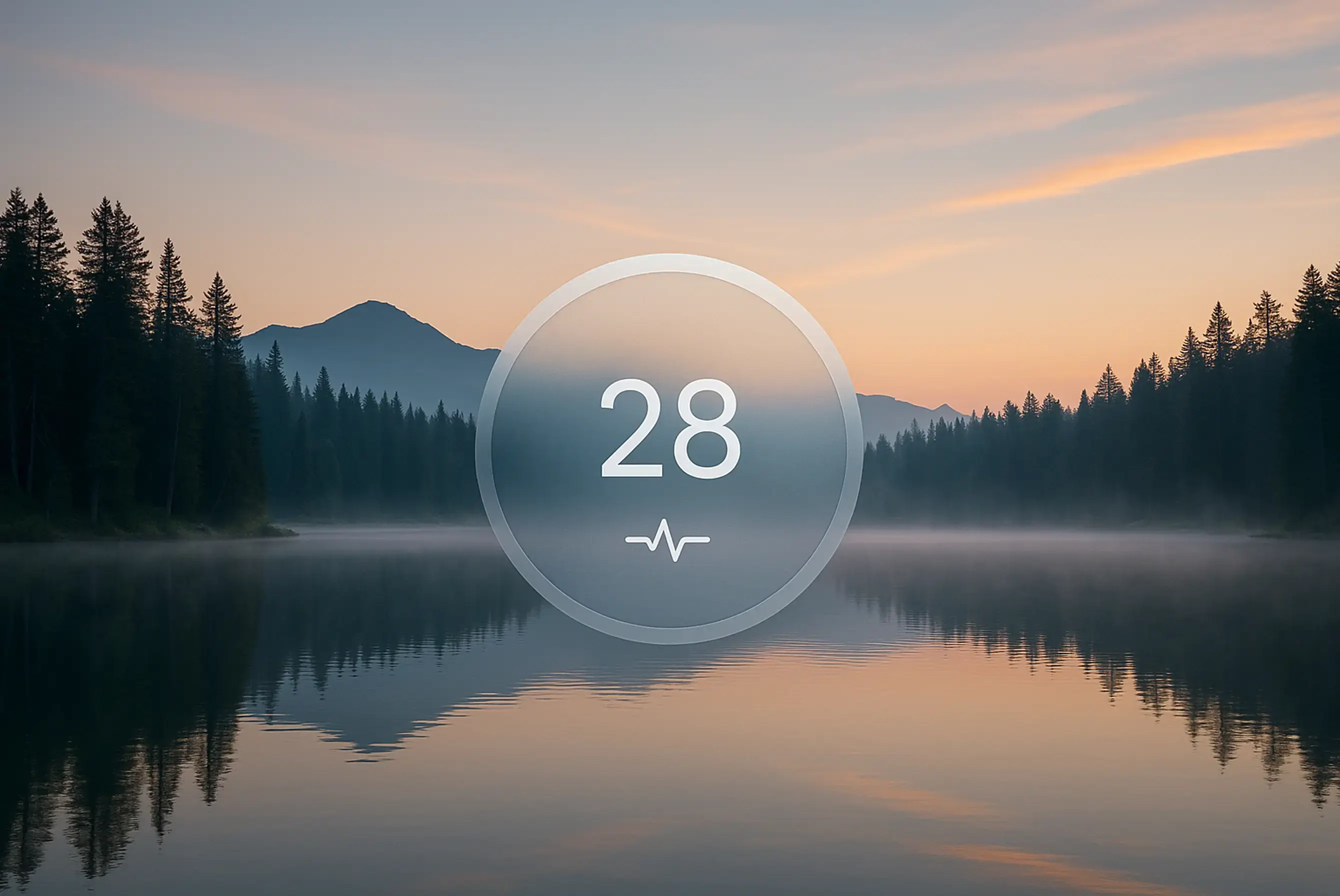Stress Score: Tracking & Managing Your Daily Stress
What is Sonar’s Stress Score?
Stress is your body’s natural response to physical or mental challenges. While brief surges can sharpen focus, chronic stress can erode health and performance. Sonar’s Stress Score turns real-time readings from your Apple Watch, Garmin, Oura Ring, Fitbit and other connected wearables into an easy to understand metric, updated throughout the day. By comparing your current heart rate variability (HRV) and heart rate (HR) to your personal baselines - and filtering out periods of physical exercise - Sonar helps you recognize the moments, habits, and environments that dial stress up or down.

Understanding Your Stress Score
Your stress levels appear on a 0 - 100 scale and are color coded into four zones:
- Low (0 – 24) - Calm, clear headed, and physiologically balanced.
- Moderate (25 – 49) – Alert yet composed; capable of handling everyday demands
- Elevated (50 – 74) – Noticeable tension; a cue to monitor how you’re feeling and adjust as needed.
- High (75 – 100) – Significant physiological strain that may warrant more immediate attention.

As with all metrics, trends matter more than a single data point. Consecutive days in the Elevated or High range can signal a need to reassess workload, recovery habits, or lifestyle factors.
How is Stress calculated?
Sonar analyzes real-time readings from your wearable such as heart-rate and HRV, comparing them to your personalized baselines captured during restful periods. Stress updates are paused during workouts so that cardiovascular load (i.e. Strain) isn’t misclassified as psychological stress. Your stress levels are influenced by several factors including:
- Heart Rate Variability (HRV) - Drops below baseline signal higher levels of tension
- Heart Rate (HR) – Elevations above resting norms can indicate that your body is in a heightened state of alertness or ‘fight-or-flight’ mode.
- Resting Heart Rate (RHR) – Persistent rises indicate cumulative stress load or insufficient recovery.
- Maximum Heart Rate (Max HR) – Knowing your personal ceiling helps distinguish stress-related spikes from exercise-induced peaks.
- Motion Data – Accelerometer data isolates true mental stress from exercise induced changes.
Inactive vs. Sleep Stress
Sonar segments stress based on context, so you can see how daytime tension compares with overnight recovery:
- Inactive (Daytime) Stress – Detected while you’re awake but not exercising (e.g., commuting or back-to-back meetings).
- Sleep Stress – Reveals how effectively your body down-regulates overnight and can foreshadow next-day recovery.
How Stress Interacts with Your Recovery & Strain
Persistent stress elevates resting HR, depresses HRV, and often drives your Recovery Score down - leaving you less prepared to absorb Strain from training. Monitoring all three metrics together empowers you to:
- Plan workouts on days when stress is low and recovery is high.
- Prioritize rest when chronic stress pushes recovery into the red.
- Identify habits (late night screens, skipped meals, caffeine binges) that spike stress and strain simultaneously
Evidence Based Ways to Lower Your Stress
Reducing stress doesn’t require a total lifestyle overhaul - small, science-backed habits practiced consistently can make a profound difference. Some tactics to consider include:
- Mindful Breathing & Meditation – Even five minutes of cyclic sighing or box breathing can restore HRV and calm the sympathetic surge.
- Prioritize Quality Sleep – Target 7 – 9 hours with a consistent wind down routine - dim lighting, no caffeine after midday, and device curfews.
- Strategic Movement – Mix moderate exercise with mobility, yoga, or a short walk to release muscular tension and boost endorphins without overshooting strain.
- Balanced Nutrition & Hydration – Stabilize blood glucose and cortisol with regular meals, adequate protein, and smart caffeine timing.
- Micro Breaks – Insert two minute pauses between tasks to reset posture, breathing, and mental focus.
- Social Connection – Meaningful conversations with friends, family, or colleagues buffer the physiological impact of stress.
Common Stress Triggers to Watch
Just as important as knowing what lowers stress is recognizing what silently drives it up. Keep an eye on these frequent culprits and build buffers around them:
- Overscheduled Calendars – Back-to-back commitments with no recovery windows.
- Excess Caffeine or Alcohol – Especially later in the day when they disrupt sleep quality.
- Continuous Screen Exposure – Long stretches without eye- or body-breaks overstimulate the nervous system.
- Poor Posture & Prolonged Sitting – Contributes to muscular tension and shallow breathing.
- Ignoring Early Warning Signs – Racing thoughts, clenched jaw, or rapid breathing indicate it’s time for a quick reset.
Balancing Data with Self Awareness
Sonar’s Stress Score is a powerful tool for understanding and improving your stress response, but it’s only part of the picture. Use it to experiment: notice how a morning walk, breathing exercise, or meeting schedule tweak shifts your stress level - and more importantly, how you feel. Listen to your body, trust your instincts, and balance the data with your own experience. By treating Stress Score as a guide rather than a grade, you’ll build a resilient routine that supports peak performance and long-term well-being.
About Sonar
Sonar unifies activity, sleep and nutrition data from all of your favorite wearables and health apps, transforming it into deeply personalized guidance for boosting your daily performance, healthspan and longevity. Whether you’re a seasoned athlete or in the early stages of your health journey, Sonar is for everyone and is trusted by tens of thousands of users in over 165 countries. Launched out of Columbia University in New York, and built in partnership with doctors from Johns Hopkins and UC San Diego, Sonar merges the latest medical, sports and data science to help you train smarter, recover faster, sleep deeper, eat healthier and push yourself to new limits.
More to Explore
Get the latest from Sonar
Share your email to stay up-to-date with all things Sonar
- FAQ
- Get in touch
- iOS app
- Terms & Privacy Policy
?